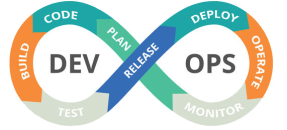



How to choose the right AWS EC2 instance for my application ?
 One of the questions we often get from customers is, which is the right AWS instance type for my application ?
One of the questions we often get from customers is, which is the right AWS instance type for my application ?
AWS provides large number of EC2 instance types starting from 1cpu/1GB Ram to 32cpu/244 GB Ram. Many of our customers are overwhelmed by the instance types and asks us to suggest them the right instance type.

Need to decide on the right Cloud options ? Suggestions from expert ?
I will help you with the right insights and guidance
Though choosing instance type for an application depends on many factors(e.g type of usage , concurrent users, DB , I/O , etc) but I think the question itself is not as relevant today as it was traditionally.
Here’s why.
1.Approach to sizing when cloud computing was not an option.
2.Why was this exercise required ?
3.In cloud computing , should we be as concerned about the right instance configuration ?
One of the key benefits of cloud is scaling up/down as per the requirement. This means doing exhaustive analysis on the sizing/configuration needs for the application is not that critical. Also doing the sizing when future usage pattern , load or traffic is not known makes the exercise futile.
The sizing approach should be, to start with a configuration that works for the current requirement and upgrade when required. The upgrade can be done at the click of a button with almost zero downtime. By not utilizing this approach you may be discarding the critical scaling up or down feature of cloud computing.
4.But for some businesses doing the sizing for future requirements cannot be done away with.
Budgetary constraints will require to plan for the annual outgo which inturn will require future sizing requirements be known. In such a scenario one would have to do capacity planning including load testing with projected user loads as required.
The only saving grace is, you do not have to invest in the complete capacity on day one. But ramp it up when really required.That way you might have budgeted an higher amount, but will use it only if required.
Have more questions ? Reach us, using the form link given below.
Connect with Saif @ https://in.linkedin.com/in/syedsaif
For any queries reach us at contact@clozon.com | Use the Form